This post has been read 4646 times!
 February 26, 2024- I have only been here for 8-weeks, but I have recorded numerous species of birds on Greer Lake.
February 26, 2024- I have only been here for 8-weeks, but I have recorded numerous species of birds on Greer Lake.
Long Legged Wading Birds
Sandhill Cranes: These are the same two from a few years ago when I live a few miles away. Below is the male I named Brutus.
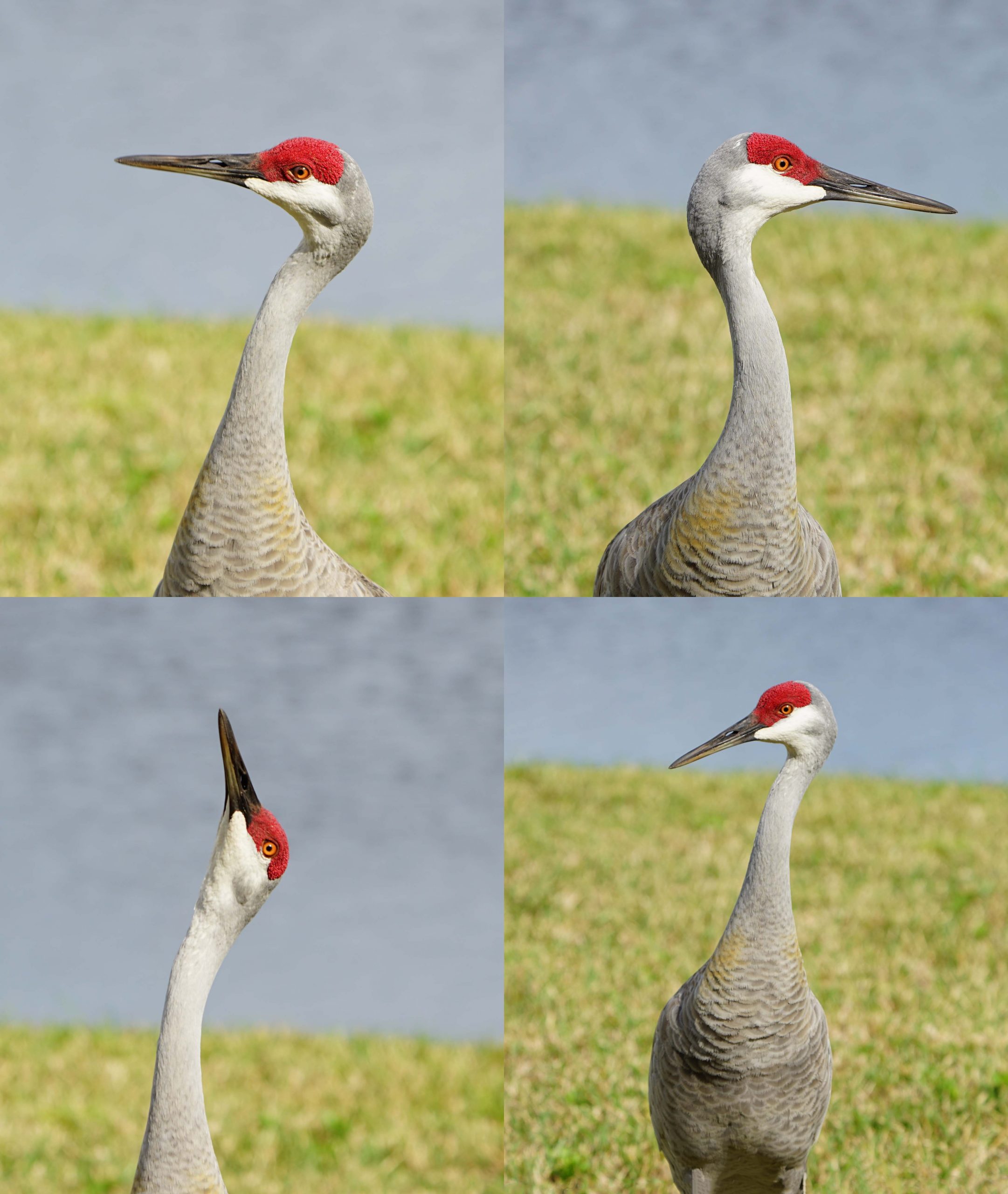
 Below is the female I named Harriot
Below is the female I named Harriot
 Below is a second new male, not Brutus
Below is a second new male, not Brutus A Bittern (below)
A Bittern (below)
Limpkin (below) are basically the same thing as a Sandhill Crane, but a bit smaller and browner. They sound and behave the same. 


 Roseate Spoonbill (below)
Roseate Spoonbill (below)

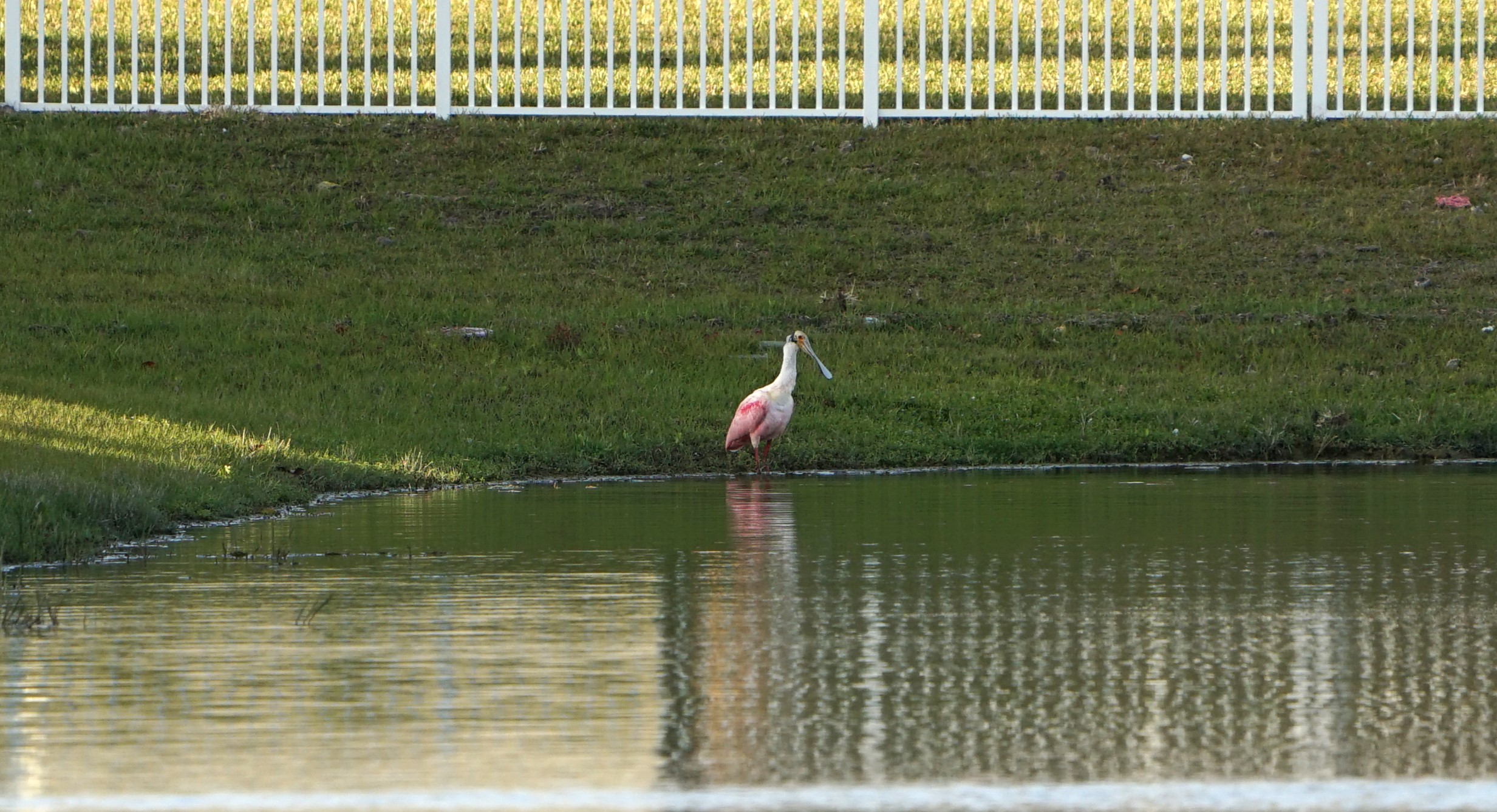 October 6, below
October 6, below

October 13, above. October 20, 2024, below.  ____________________________________
____________________________________
Wood Stork (below) July 3, 2024- (below) It has been four months since I have seen these Wood Storks. The rains after the drought are bringing all of the birds back.
July 3, 2024- (below) It has been four months since I have seen these Wood Storks. The rains after the drought are bringing all of the birds back.
May 13, 2024- (above) Mother and baby Great Blue Heron
 May 8, 2024- (above) Wow. This is the best photo of a bird I have taken. The reflection is great. It looks like I used a filter to give it an oil painting look, but I did not.
May 8, 2024- (above) Wow. This is the best photo of a bird I have taken. The reflection is great. It looks like I used a filter to give it an oil painting look, but I did not.
Full-sized Great Blue Heron (below), which is different from a Little Blue Heron. This one also could be more in the birds of prey category.
September 24, 2024- Either the juvenile that’s now adult or the original adult, I got this close-range photo (below)
 Green Heron (below) spotted on June 7, 2024- The apps say it is rare. It has a very strange grunting sound, like an alligator. This bird is like a larger heron except it has shorter legs and neck, like a Least Bittern.
Green Heron (below) spotted on June 7, 2024- The apps say it is rare. It has a very strange grunting sound, like an alligator. This bird is like a larger heron except it has shorter legs and neck, like a Least Bittern.
 _____________________________________
_____________________________________
Little Blue Heron with Snowy Egret (below)

 Above, Little Blue Heron juvenile in transition foliage (June 10, 2024)
Above, Little Blue Heron juvenile in transition foliage (June 10, 2024)
____________________________________
 September 1, 2024- Adult Tricolored Heron (above), and video (below)
September 1, 2024- Adult Tricolored Heron (above), and video (below)
November 11, 2024- Tricolored Heron, below, swallows a 1-pound bass Snowy or White Egret with Tricolored Heron (below). They seem to be the same species but with different plumage.
Snowy or White Egret with Tricolored Heron (below). They seem to be the same species but with different plumage.



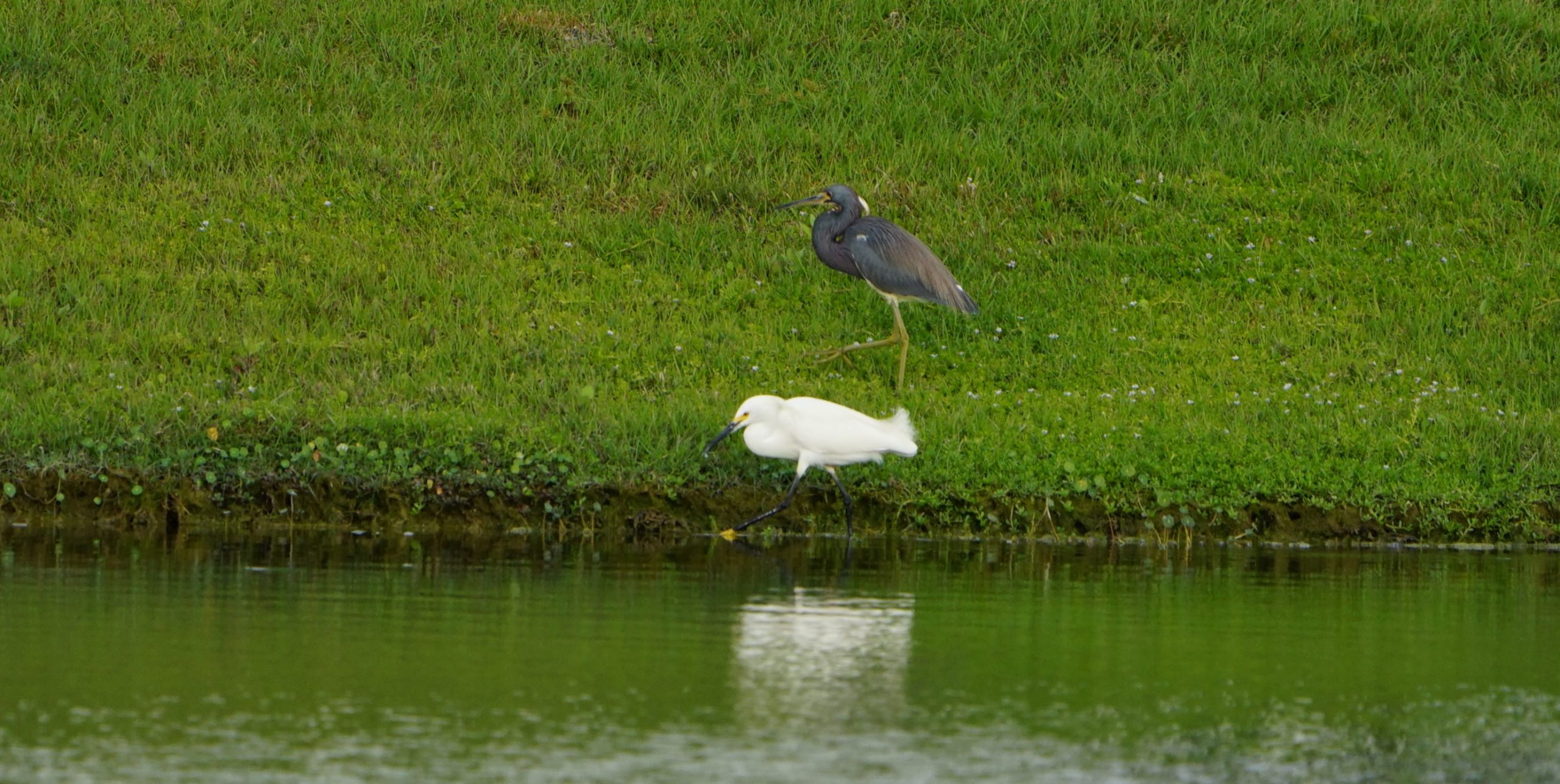
 The Great Egret (below) has never landed on Greer Lake. It lives nearby on its own lake.
The Great Egret (below) has never landed on Greer Lake. It lives nearby on its own lake. 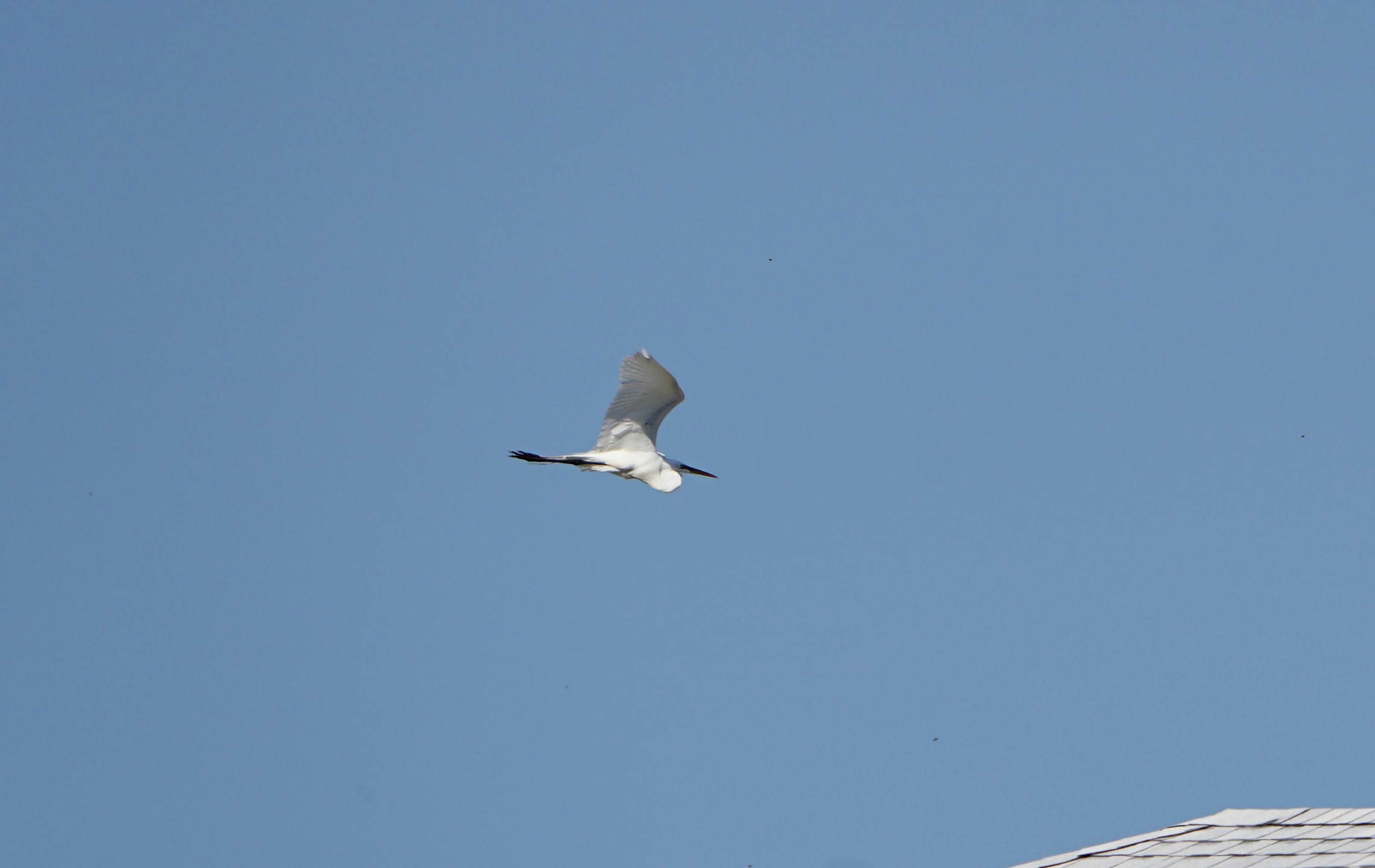

 The smaller Snowy or White Egret (below)
The smaller Snowy or White Egret (below)
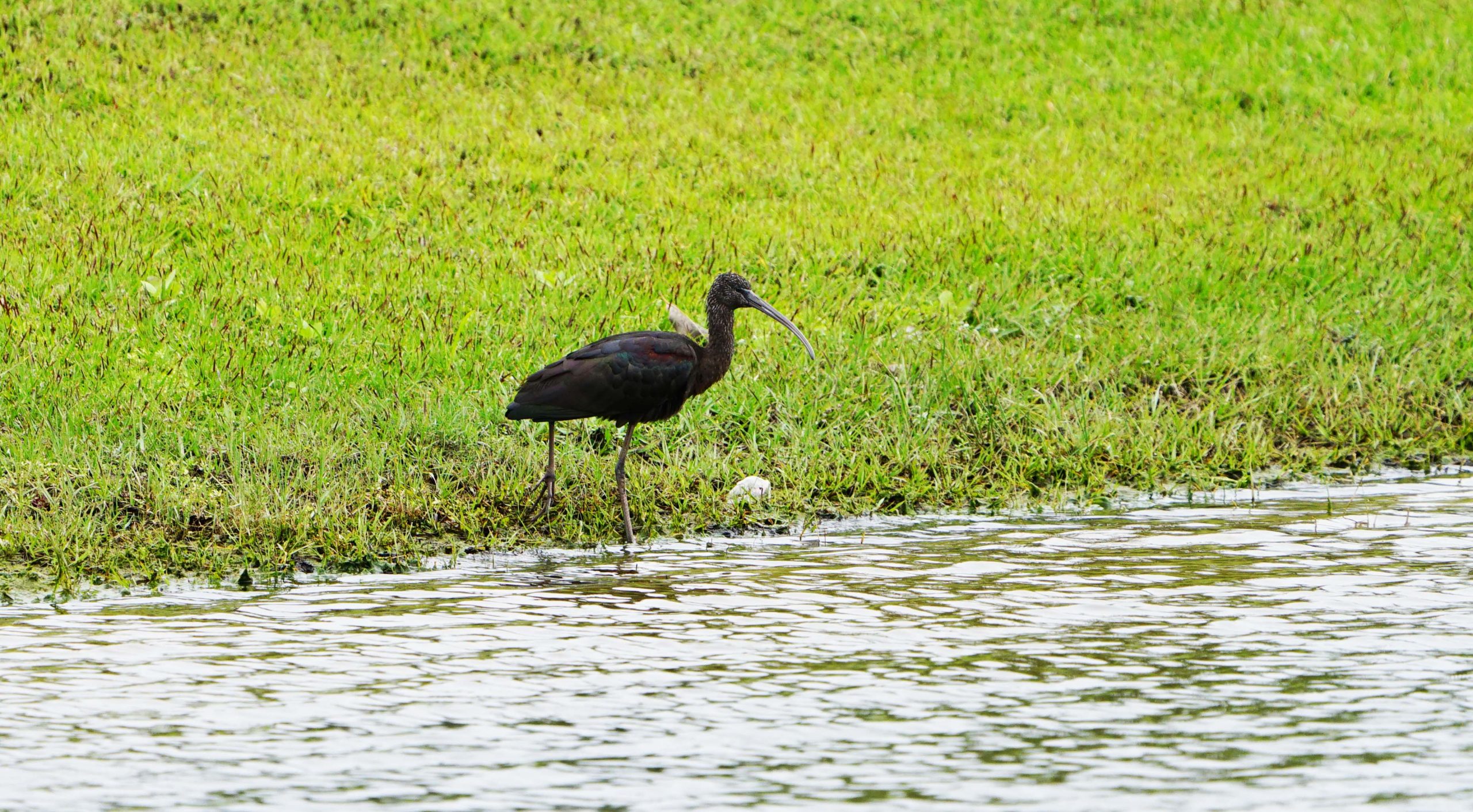

 American White Ibis
American White Ibis
 American White Ibis (Left, below, with Snowy Egret)
American White Ibis (Left, below, with Snowy Egret) American White Ibis (Left, below, with Little Blue Heron)
American White Ibis (Left, below, with Little Blue Heron)
________________________
____________________________
2-9-2025- Greater Yellowleg (below) is back as solitary bird. The bass minnows are the reason.
 2-10-2025- I think Greater Yellowlegs are the smallest wading bird that behaves like the bigger wading birds. They are usually alone and not with a mate of their own species, but fish all day along with similar wading birds. That is what the egrets and heron do. The smaller sandpipers travel in flocks and behave differently.
2-10-2025- I think Greater Yellowlegs are the smallest wading bird that behaves like the bigger wading birds. They are usually alone and not with a mate of their own species, but fish all day along with similar wading birds. That is what the egrets and heron do. The smaller sandpipers travel in flocks and behave differently.
 Just as the Loggerhead Shrike is a miniature falcon-like bird, the Greater Yellowleg is a miniature egret or heron.
Just as the Loggerhead Shrike is a miniature falcon-like bird, the Greater Yellowleg is a miniature egret or heron.
2024- Greater Yellowleg (below), in the Sandpiper class (could also be a Lesser Yellowleg)
 Below, a Greater Yellowleg snapped on November 11, 2024, after being gone for the hot summer
Below, a Greater Yellowleg snapped on November 11, 2024, after being gone for the hot summer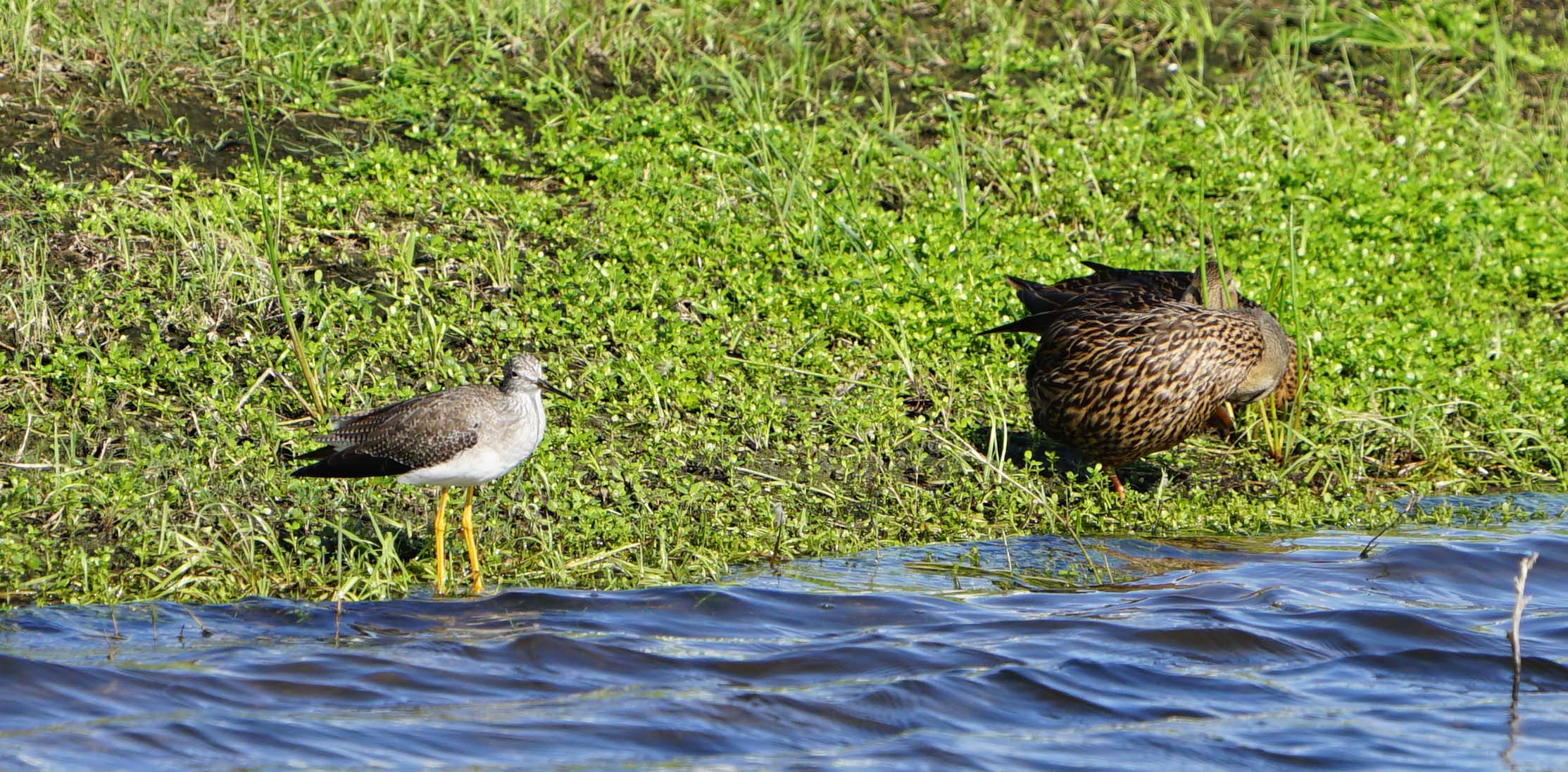 2024- Spotted or Least Sandpiper, not sure which (below)
2024- Spotted or Least Sandpiper, not sure which (below)

 Killdeer(below)
Killdeer(below)


 Killdeer, Snowy Egret, Greater Yellowleg, Limpkim (above, left to right)
Killdeer, Snowy Egret, Greater Yellowleg, Limpkim (above, left to right)
Black-necked Stilt (below)
 June 29, 2024- (Below) because of a many-month-long drought, the fuel source, fresh water molluscs, had gone away. The rains have returned allowing the molluscs to grow back. Today, I saw at least five different species of wading birds.
June 29, 2024- (Below) because of a many-month-long drought, the fuel source, fresh water molluscs, had gone away. The rains have returned allowing the molluscs to grow back. Today, I saw at least five different species of wading birds.
________________________________
 September 12, 2024- by Steven Greer
September 12, 2024- by Steven Greer
This is a new species. The Pied-billed Grebe. It looks like a duck or a loon, but it is most closely related to a Flamingo.
“The most widespread grebe in the New World, and the most familiar in most temperate parts of North America. Far less sociable than most grebes, almost never in flocks, sometimes found singly on small marshy ponds. When disturbed or suspicious, it may sink slowly until only head is above water. Rarely seen in flight. Often secretive in the breeding season, hiding in marsh, making bizarre whinnying, gobbling, cooing noises by day or night.”
Birds of Prey (Water Divers)
Great Cormorant (below). This could be more in the birds of prey category.

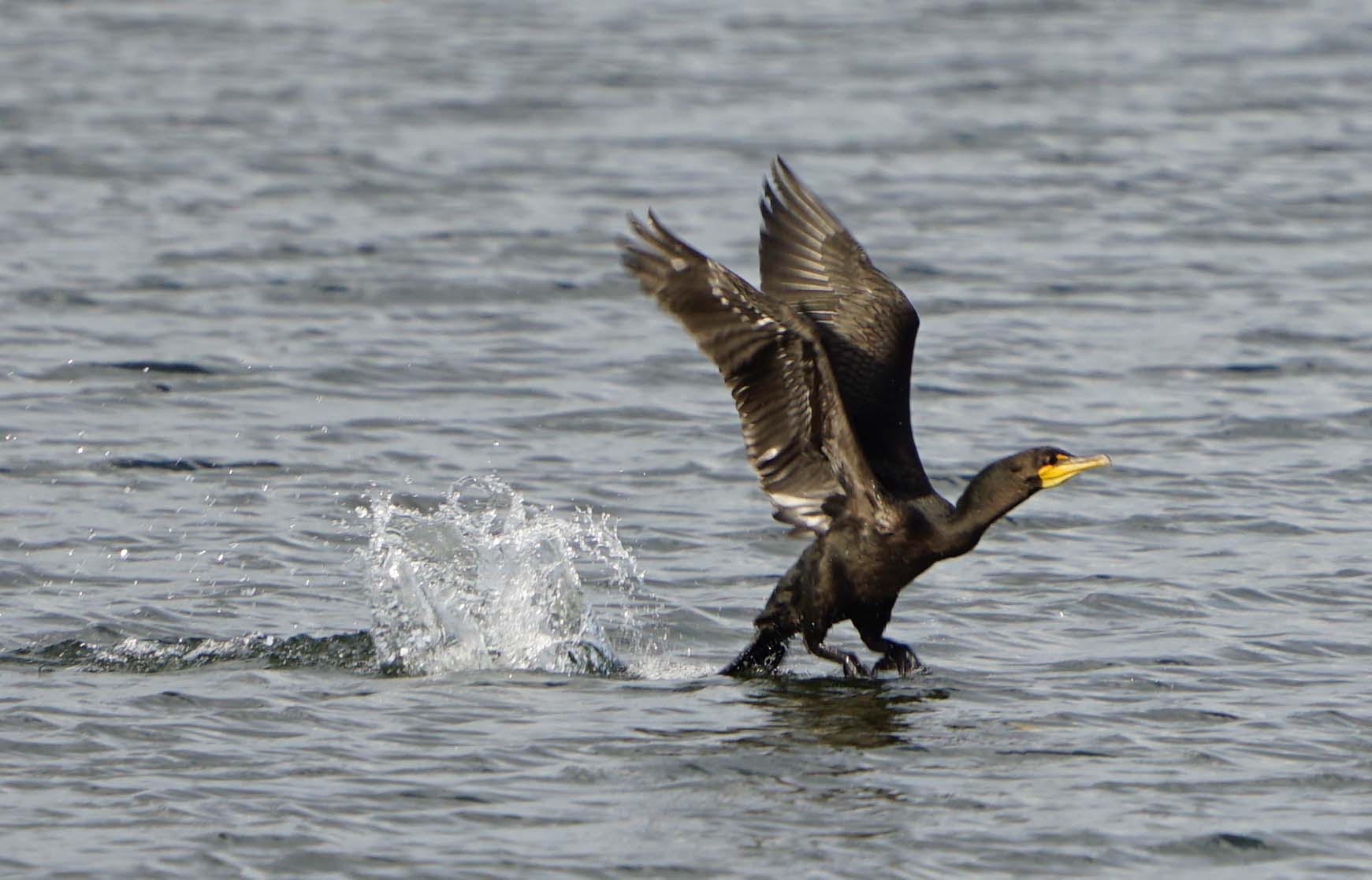
 May 6, 2024- The video below seems to show two parents teaching their new adolescents how to swim.
May 6, 2024- The video below seems to show two parents teaching their new adolescents how to swim.
February, 2024- Below, a female Anhingas. It appears to be a juvenile. 

 September 1, 2024- adult Anhinga (below)
September 1, 2024- adult Anhinga (below)
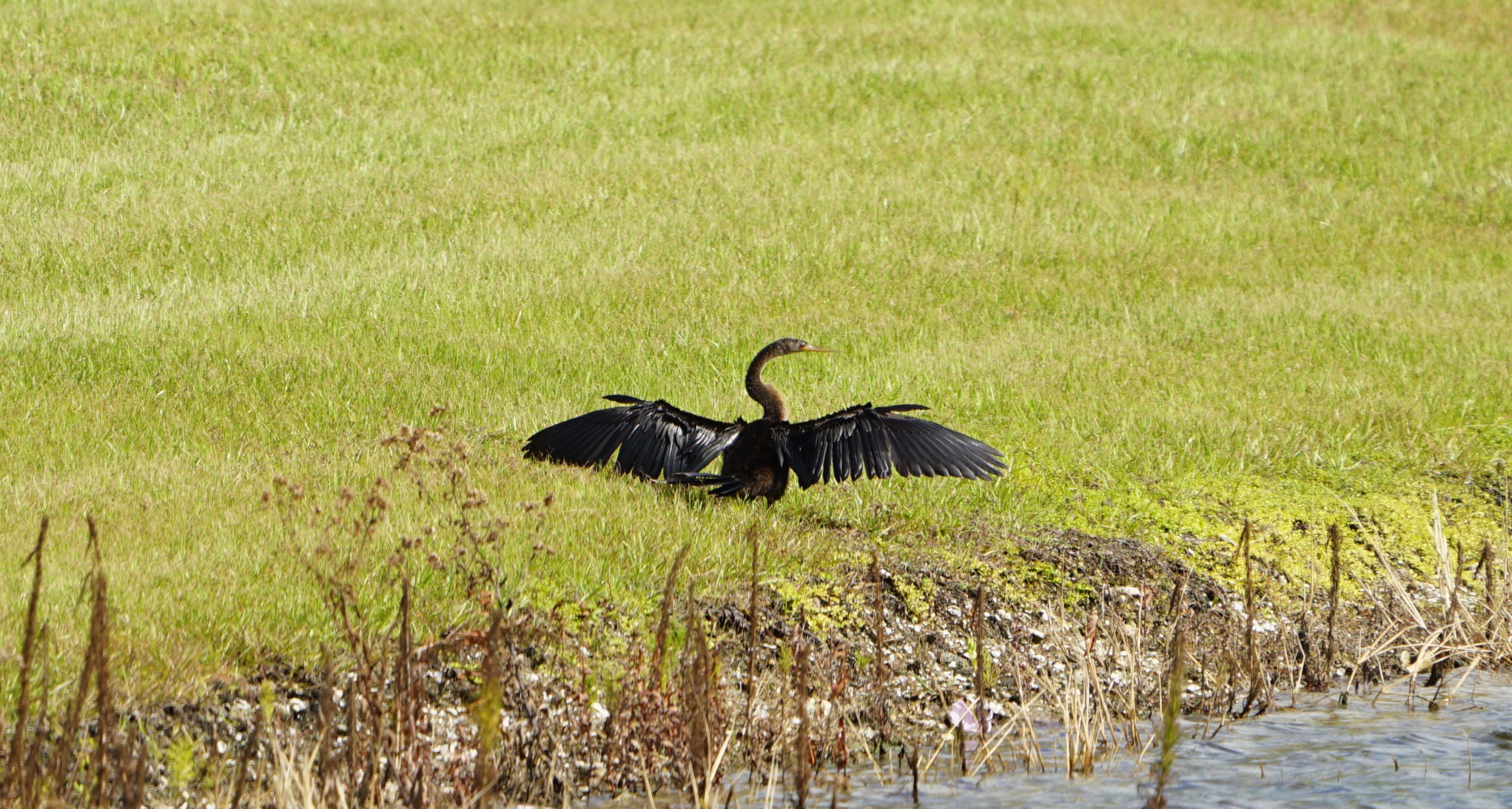
Birds of Prey (Air Divers)
Osprey (below)
This Loggerhead Shrike (below) is a rare bird and actually a miniature raptor. It is barely bigger than a hummingbird. It sits alone at the top of trees like a hawk. It eats lizards and then stabs them into sticks to store the food on a pike. 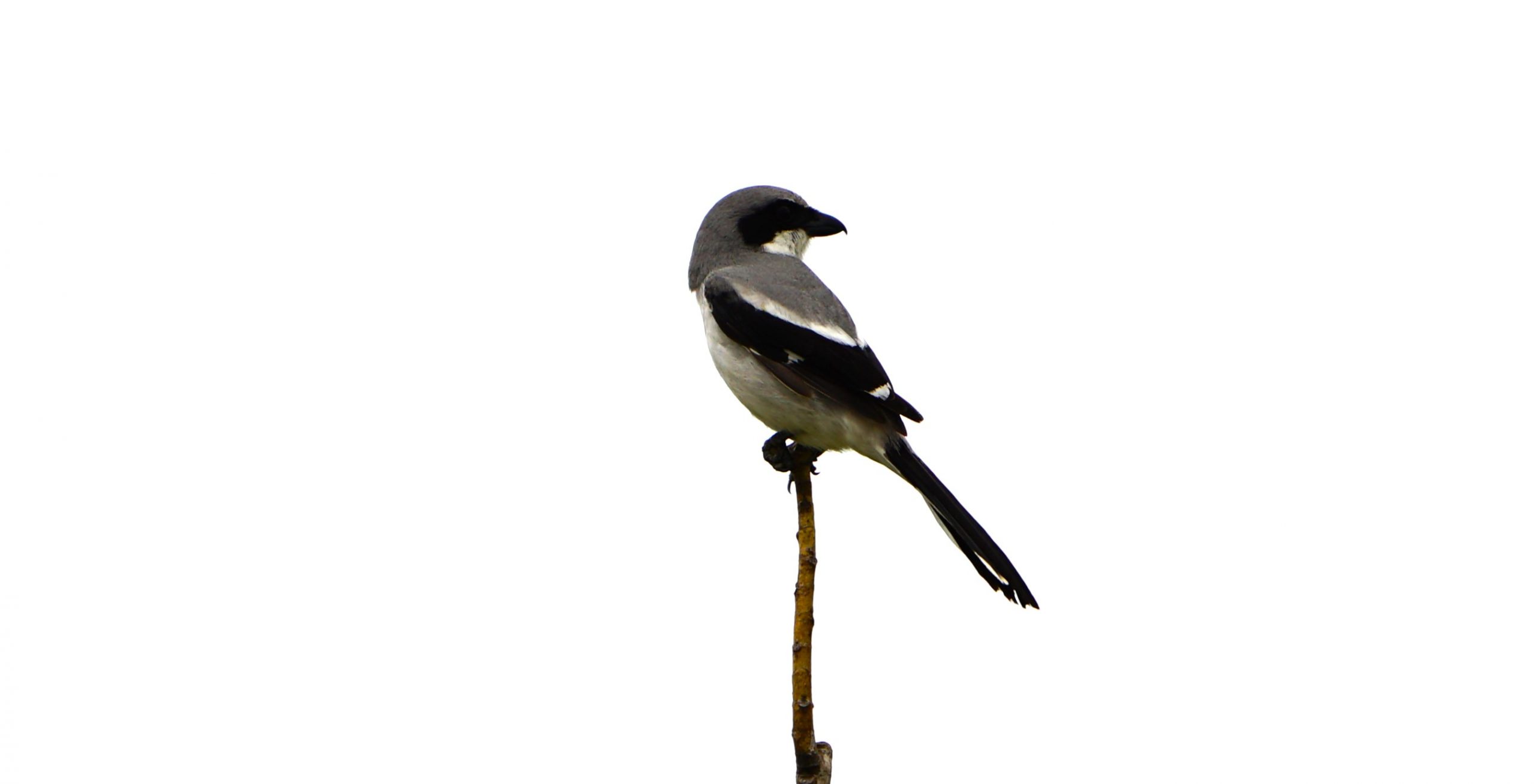

 August 7, 2024- It has been many months since I saw a shrike. There might be two of them now. I think I saw a pair. They might also be juveniles hatched this year.
August 7, 2024- It has been many months since I saw a shrike. There might be two of them now. I think I saw a pair. They might also be juveniles hatched this year. 
 May 27, 2025- Below, this is one of the two new birds that hatched this year. They and their parent have remained in the backyard region and have not left for other regions.
May 27, 2025- Below, this is one of the two new birds that hatched this year. They and their parent have remained in the backyard region and have not left for other regions. 


Turkey Vultures
December 31, 2024- Turkey vulture eating cichlid fish

 _______________________________
_______________________________
Mallard (below)

 Black-bellied Whistling-Duck (below)
Black-bellied Whistling-Duck (below)
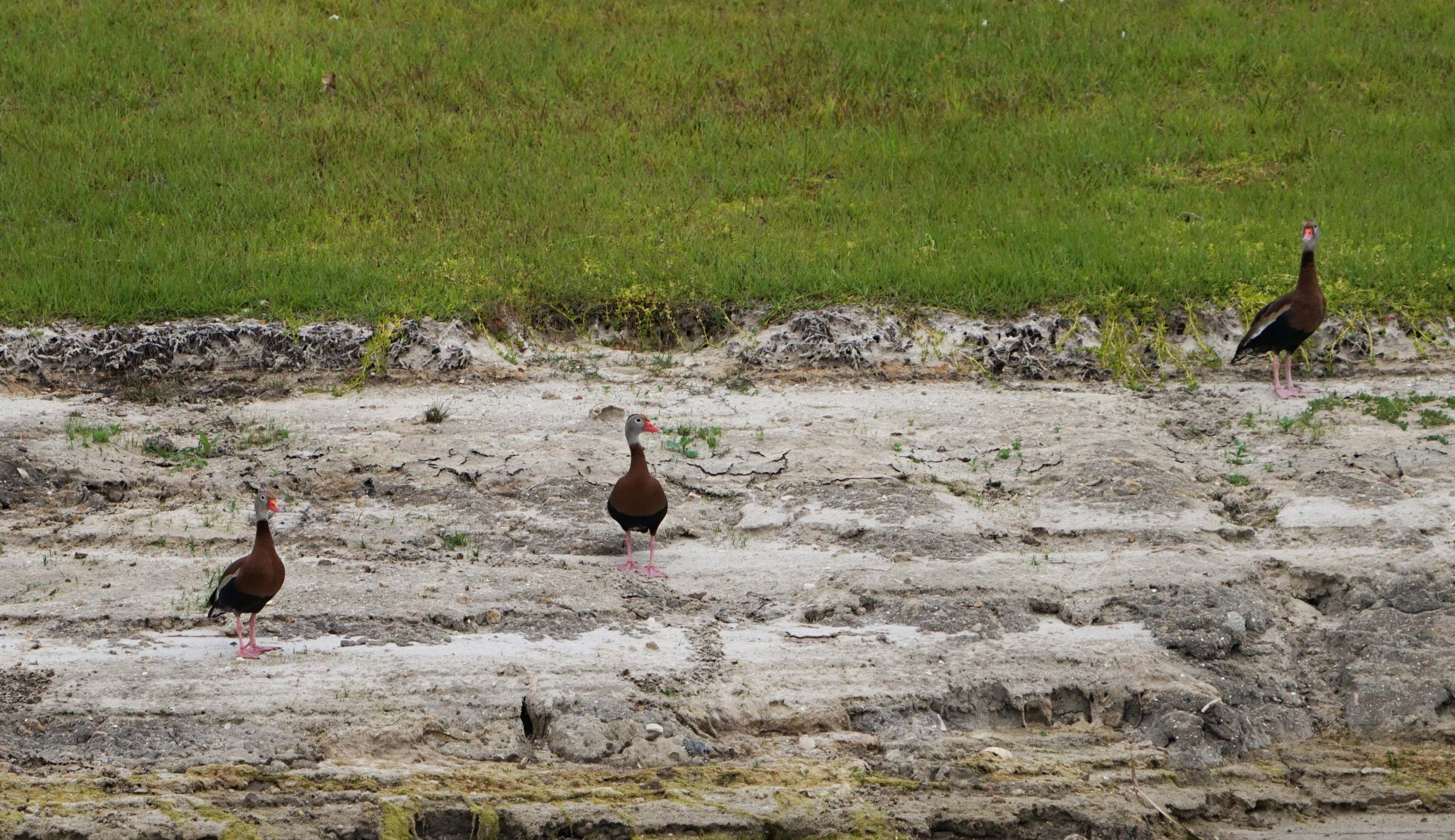

Smaller Song Birds
Northern Mockingbird (below)
 Or it might have been a Sedge Warbler is this one, below, is
Or it might have been a Sedge Warbler is this one, below, is
Morning Dove. This common small bird was hard to shoot. It is skittish. 

 Eurasian Collared-Dove (below)
Eurasian Collared-Dove (below)
Crows and Similar Birds
Boat-tailed Grackle (below)
 Fish Crow (below), looks like a Grackle, but is larger and more intelligent. It travels alone, unlike Grackle.
Fish Crow (below), looks like a Grackle, but is larger and more intelligent. It travels alone, unlike Grackle.  American Crow (below)
American Crow (below)
Black Bird, male and female (below)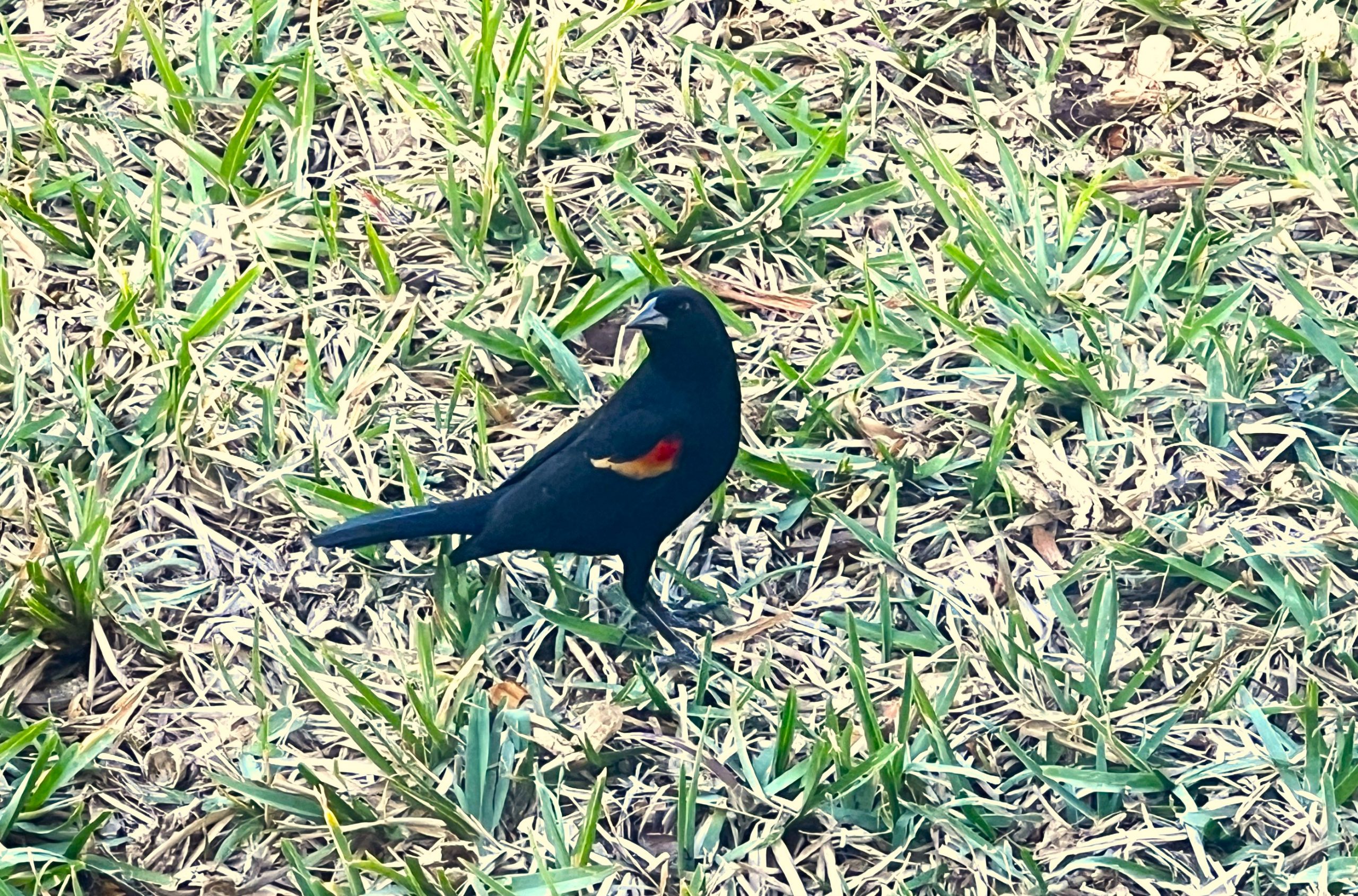

Sea Birds
Seagull (not pictured yet, but witnessed)
What They Eat
It is March 11, 2024 and I just now learned what these birds eat. There are countless empty freshwater mollusc shells. The big shell is an Elliptio. The smaller one is a purple clam. 

Reptiles
Painted Turtle
 4-12-2024- Florida softshell turtle (below)
4-12-2024- Florida softshell turtle (below)
 Interspecies Turtles Seeming to Hang Out
Interspecies Turtles Seeming to Hang Out
Alligator
This one is about 10-feet. The neighbors called the FWC “nuisance alligator” hotline and the contract bounty hunter came out. But this one escaped death by leaving. Instead, an unlucky 5-footer was executed. 

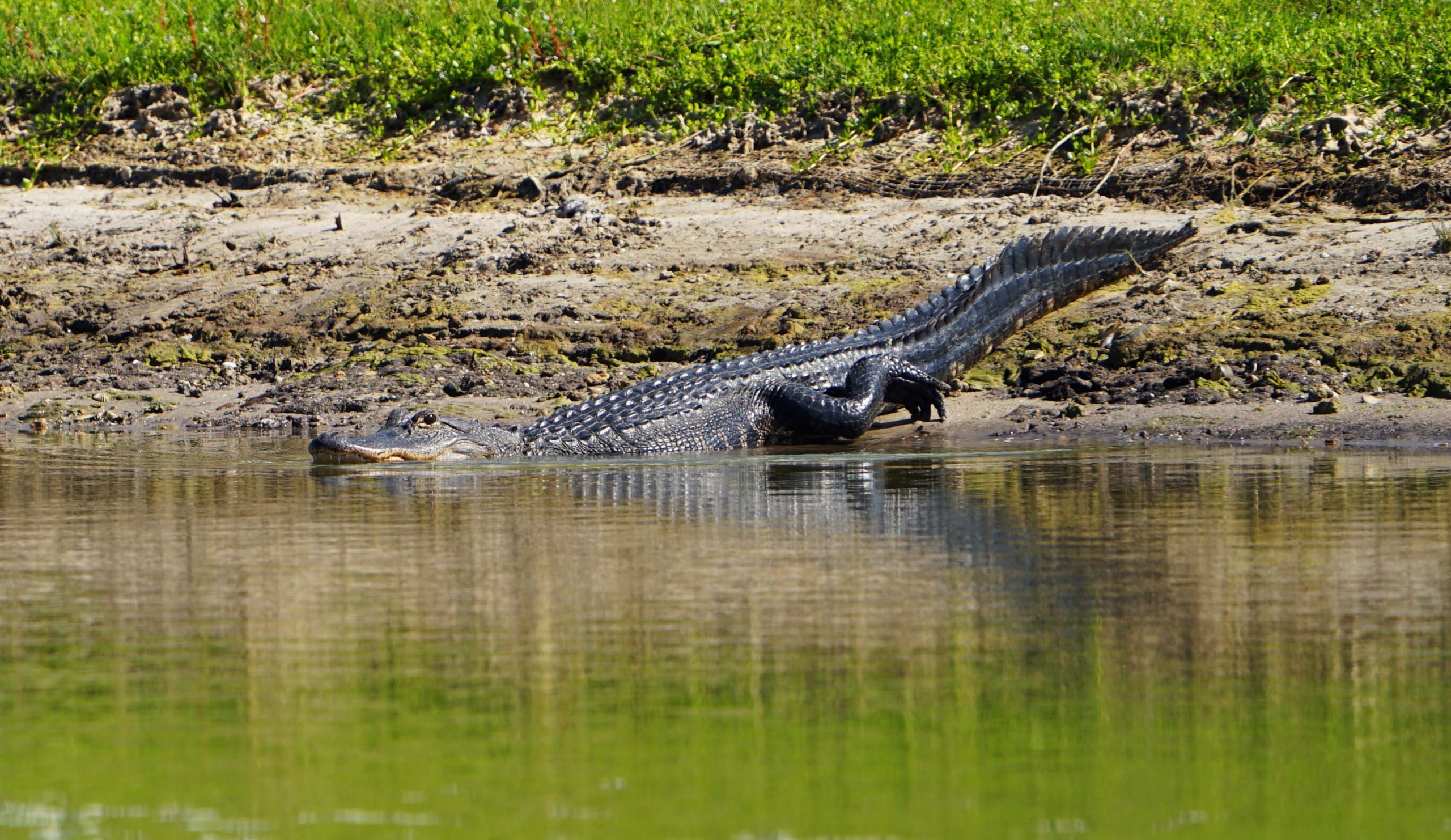 Below, on 4-2-2024, this one showed up in my driveway. It has a crooked tail from trauma. It behaves like it is unafraid of humans.
Below, on 4-2-2024, this one showed up in my driveway. It has a crooked tail from trauma. It behaves like it is unafraid of humans.  August 15, 2024- Smaller alligator
August 15, 2024- Smaller alligator
Frogs are not reptiles. I know.
__________________________
October 24, 2024- a Southern Banded Water Snake came into my house through the gap in the sliding door, I presume
Mammals
Rabbit
Bees and Wasps
__________________
October 25, 2024- Mud wasp family grows
_____________________________
Arachnids (Spiders)
Gray Wall Jumping Spider- Metaphidippus chera is a species of jumping spider in the family Salticidae.
I’m pretty sure this is the same one that was a fraction of the size and living inside my house a few feet away from this plant. They can crawl under the sliding glass door. Now, it is 1.6 cm long. I’ve seen it on my window catch bugs. His name: Jumpin Jack
Interestingly, the Internet says it is a Southwestern Sonora desert spider. This is Florida.
 Jumping Spider Gets a House Fly
Jumping Spider Gets a House Fly



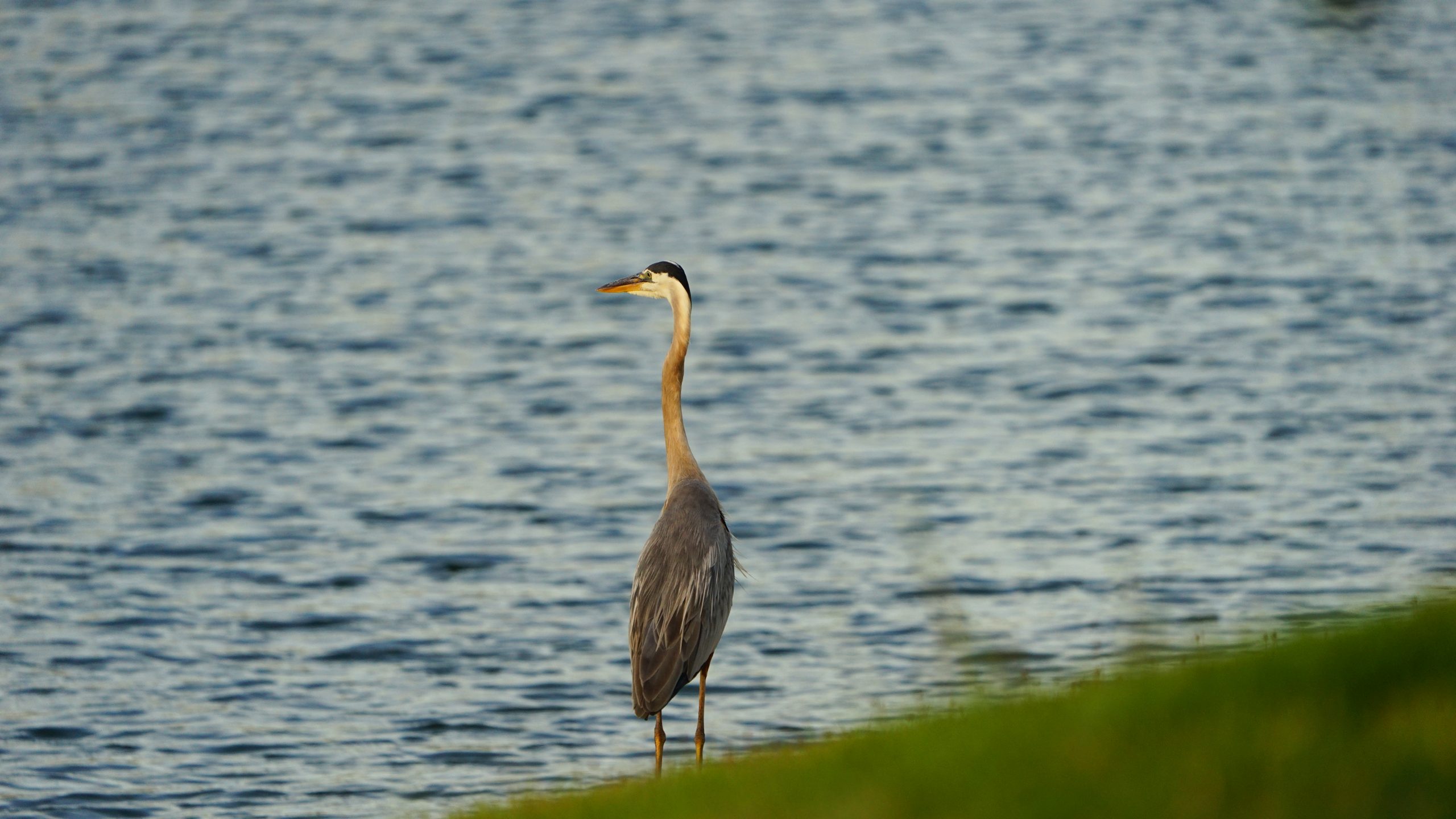

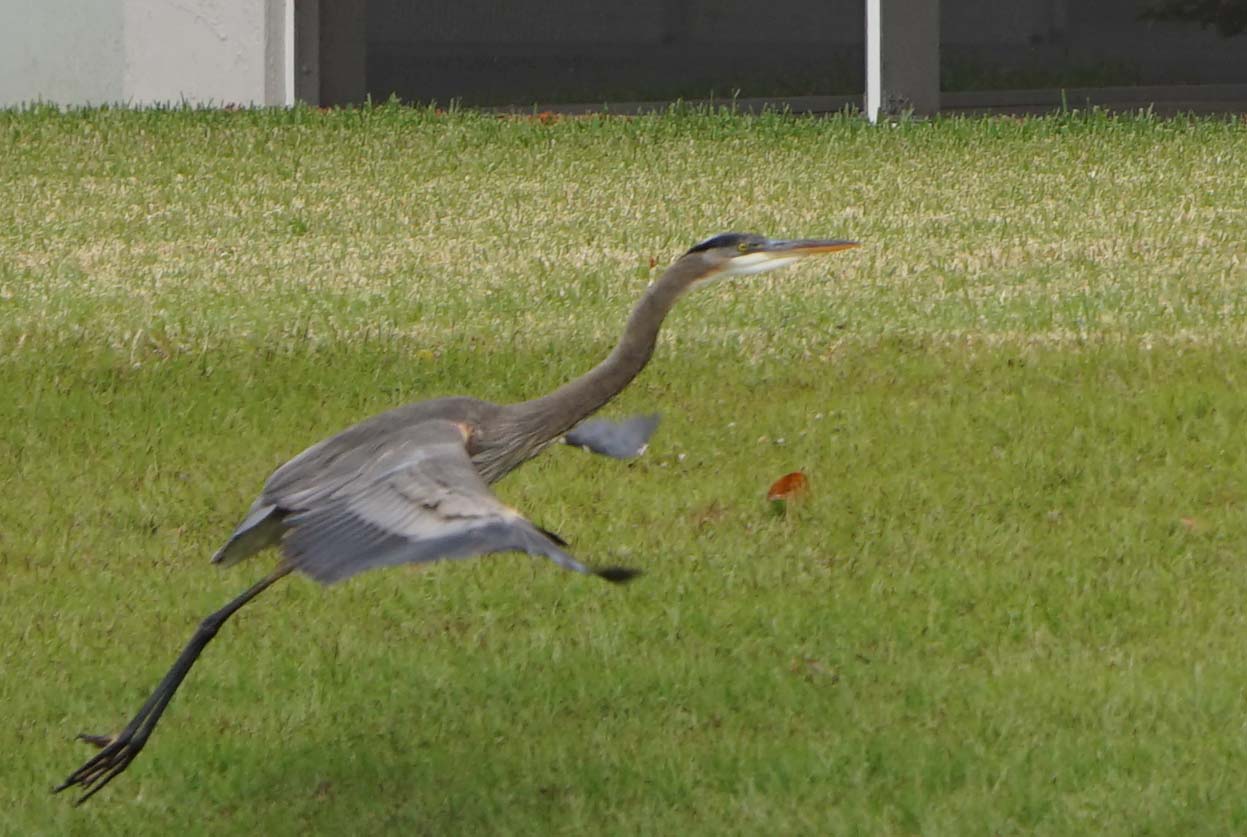



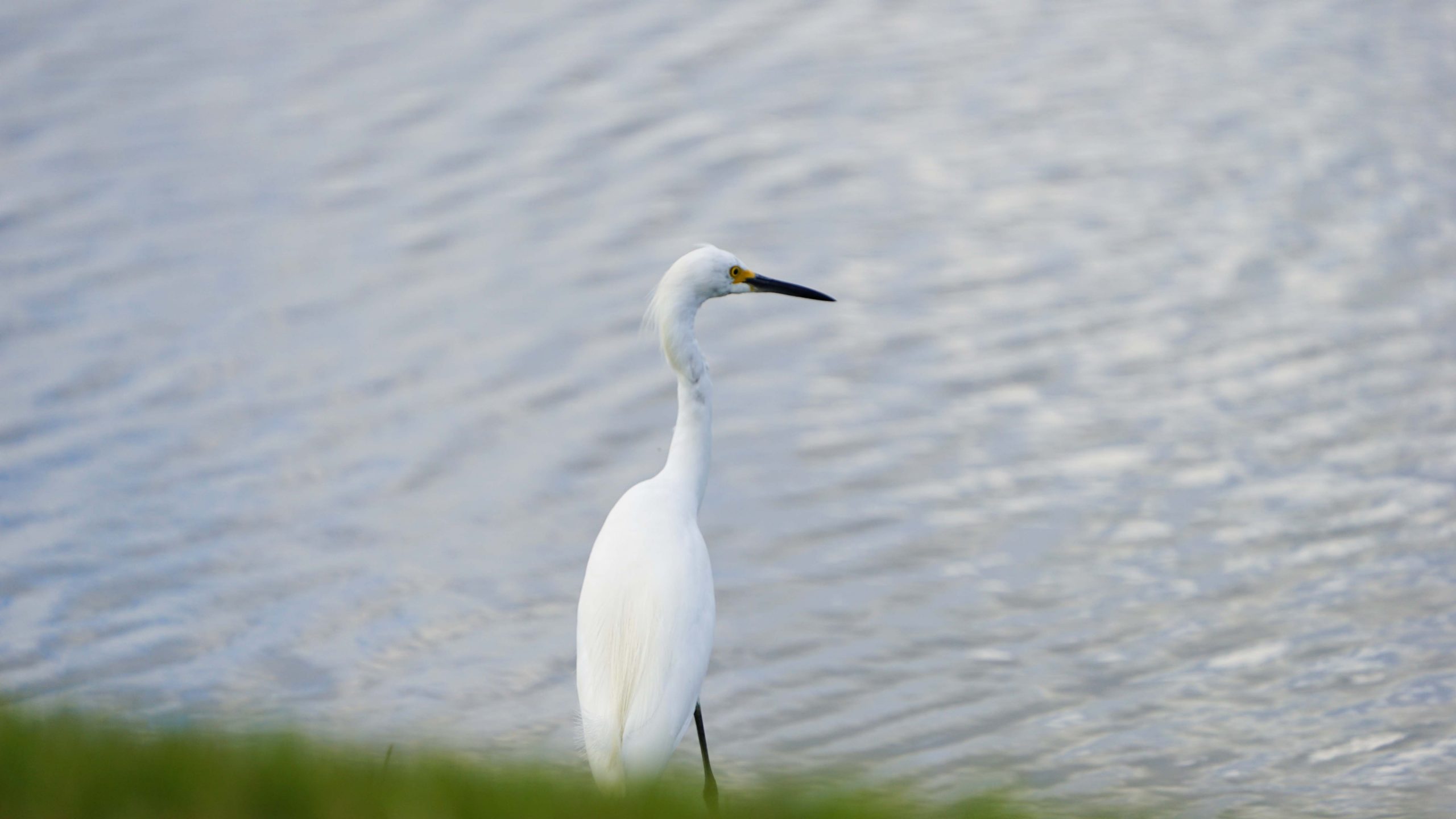









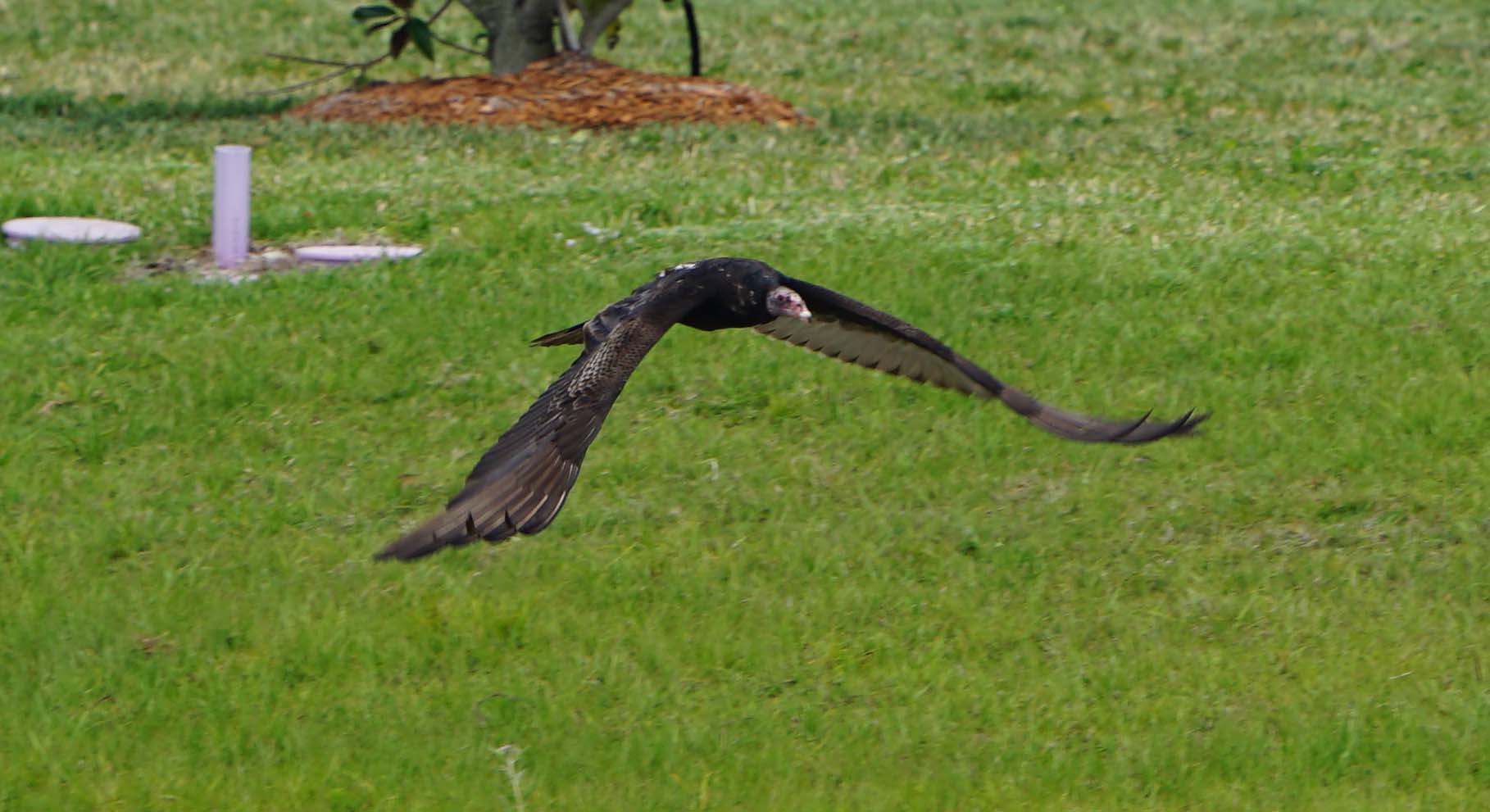






People who love animals are enlightened people.
Don’t you love living here? I’m a native 6 generation Floridian, teaching my granddaughters about the beauty that surrounds us.
I’ve seen the black bellied whistling ducks in trees (on branches about 30-40 feet up) at a lake in central Florida in June.